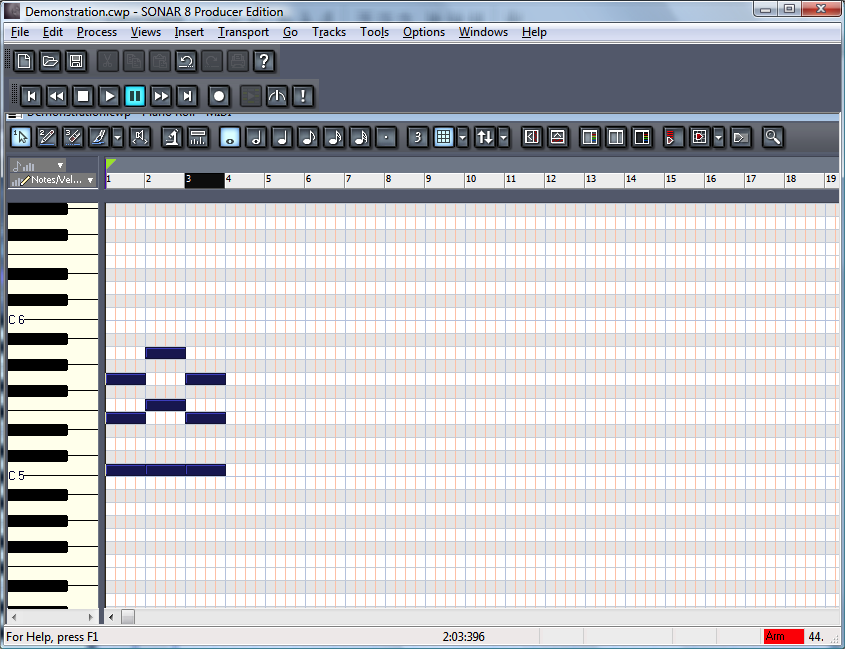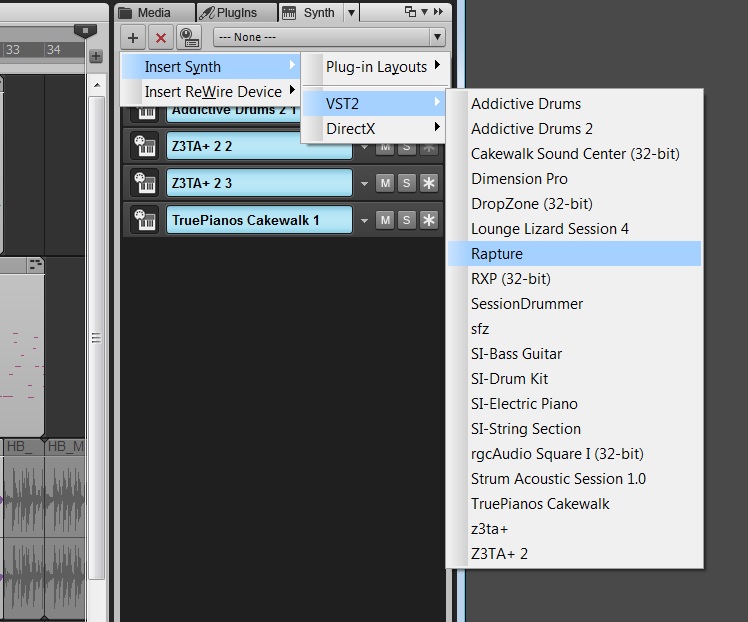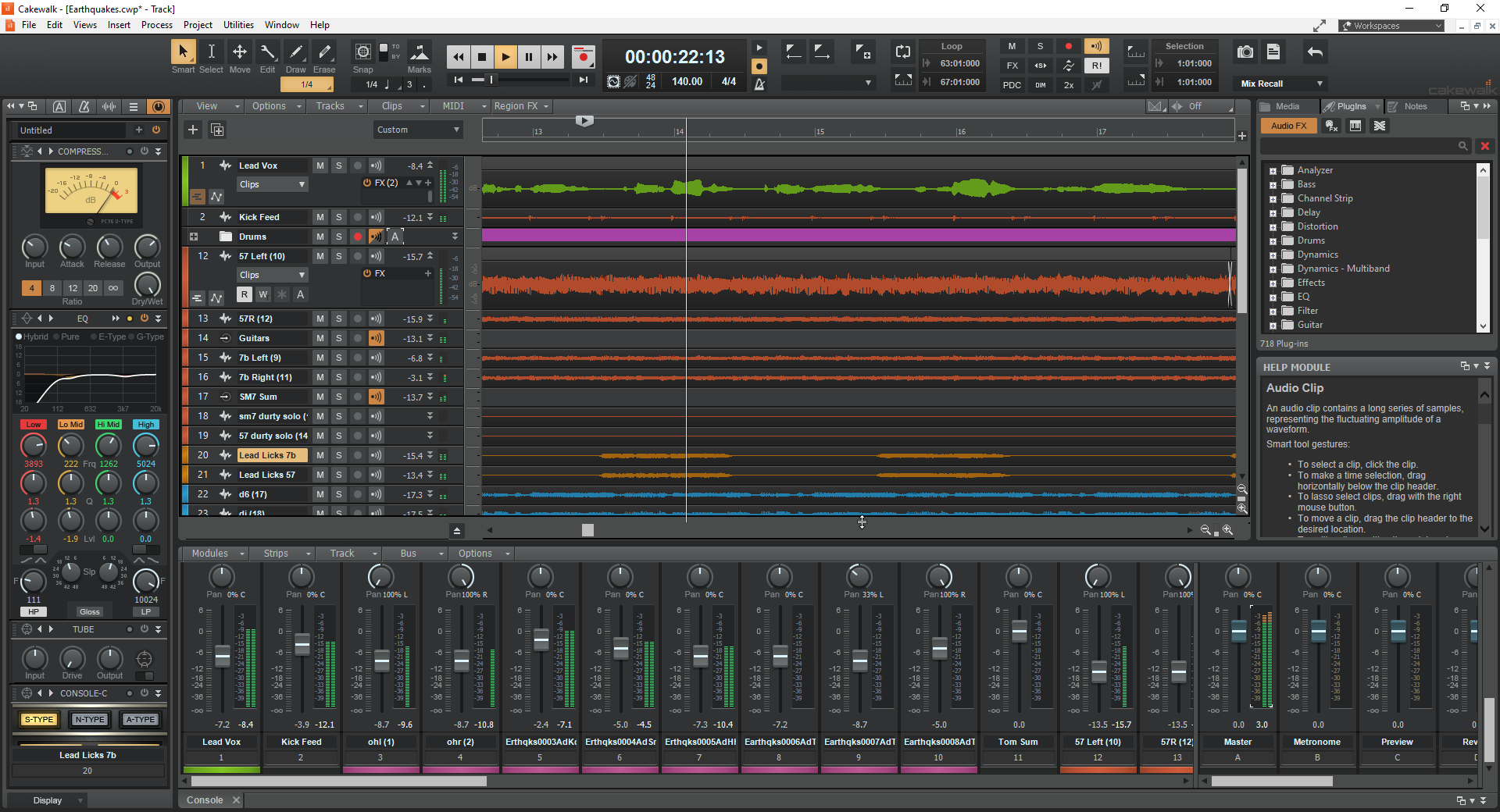
Although you can assign several rows to the same track, there's no level control for rows, so any loops are fixed at the levels at which they were recorded.

The first clip dragged into a row determines whether the row is a MIDI or audio row, with Project5 PTN files being MIDI‑based. It's important to understand that the Matrix view doesn't produce any sound by itself: you need to assign the output of each row to an audio or MIDI track so you can hear what's going on (with a MIDI clip, this means that the MIDI track needs to feed a synth as well). That should give enough background to let you understand the rest of this article, and the on‑line help within Sonar will help you to learn more about the nuts and bolts of the Matrix view. Even with a column triggered, though, you can still trigger individual clips in other columns and rows. This is equivalent to launching a Scene in Live. However, if you trigger a column, all cells in that column (which are in different rows, of course) will launch. Triggering another cell in a row - including a blank one, if desired - cuts off the currently playing cell, and that cut‑off can, again, be quantised to a rhythmic value. Only one cell can play at a time within a row. When you trigger a cell, via mouse, computer QWERTY keyboard or MIDI remote control, it can start playing immediately, or you can quantise playback to a rhythmic value - so that, for example, it won't play until beat one of the next measure.

You can also drag in a groove clip that's already in a project. Each cell can hold an audio file, step‑sequencer pattern, MIDI groove clip, REX file (with native import), or Project5 pattern file. The Matrix view is a matrix of cells arranged as rows and columns. The results you can get from the two programs may be similar, but the way you get to those results is somewhat different.

Whereas Live gives you the option to switch between the Matrix‑like Session view and a traditional, linear Arrangement view, Cakewalk have integrated the Matrix view as a sort of audio step sequencer within the Track view. The various features Cakewalk have added to Sonar over the years are generally consistent with the DAW (Digital Audio Workstation) way of working, which makes the new Matrix view all the more interesting, as it's based on encouraging a more 'live', improvisational playing style.ĭoes it look as though someone at Cakewalk has been spending time with Ableton Live? Yes, but go beneath the surface and there's a subtle difference in philosophy.
#SONAR 8 MIDI CONTROLLER HOW TO#
I guess I forgot how to set up the tracks as well.We explain some of the tricks and composition methods opened up by Sonar 8.5's new Matrix view. The first sample I load always works, anything after that I get no sound. I figured out how to get DFH to work with Sonar again but I'll load a kick drum and it will work in Sonar then, I'll I'll go to add a snare and I won't hear it. I just want to lay down the drums for this song and this is just killing all of my motivation.Īn attempt to cut down on double posting. I've been sitting here searching through the forums and reading articles for hours but I'm still not finding the answers I need. I can open DFH as a VST, but that's not even in a MIDI track, but then I can't assign which key I want to play the drum sample anyway. I can't remember how I set Sonar up to use DFH. I don't remember what I did to get midi to play through my 2496. I did figure out that I can get the MIDI to play if I use the crappy Wavetable that's on my factory sound card. Every article about MIDI starts and ends the same pretty much, haha.

I've been reading for a couple of hours now.


 0 kommentar(er)
0 kommentar(er)
